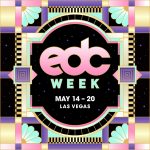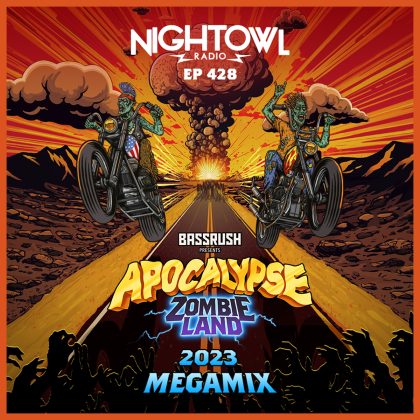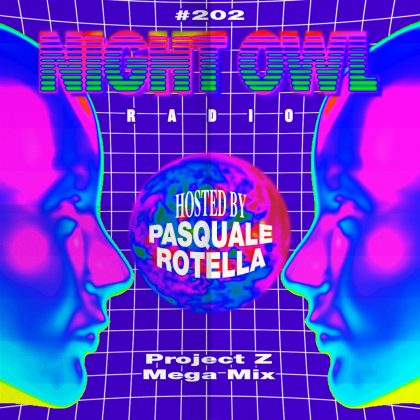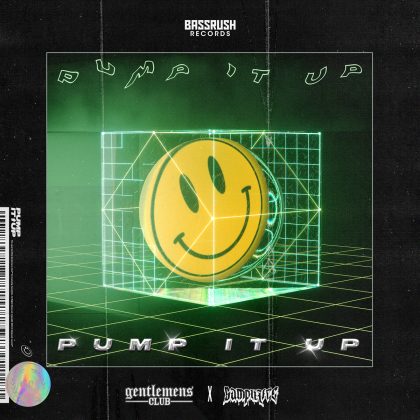Excision Is Ready to Melt Faces With the Paradox
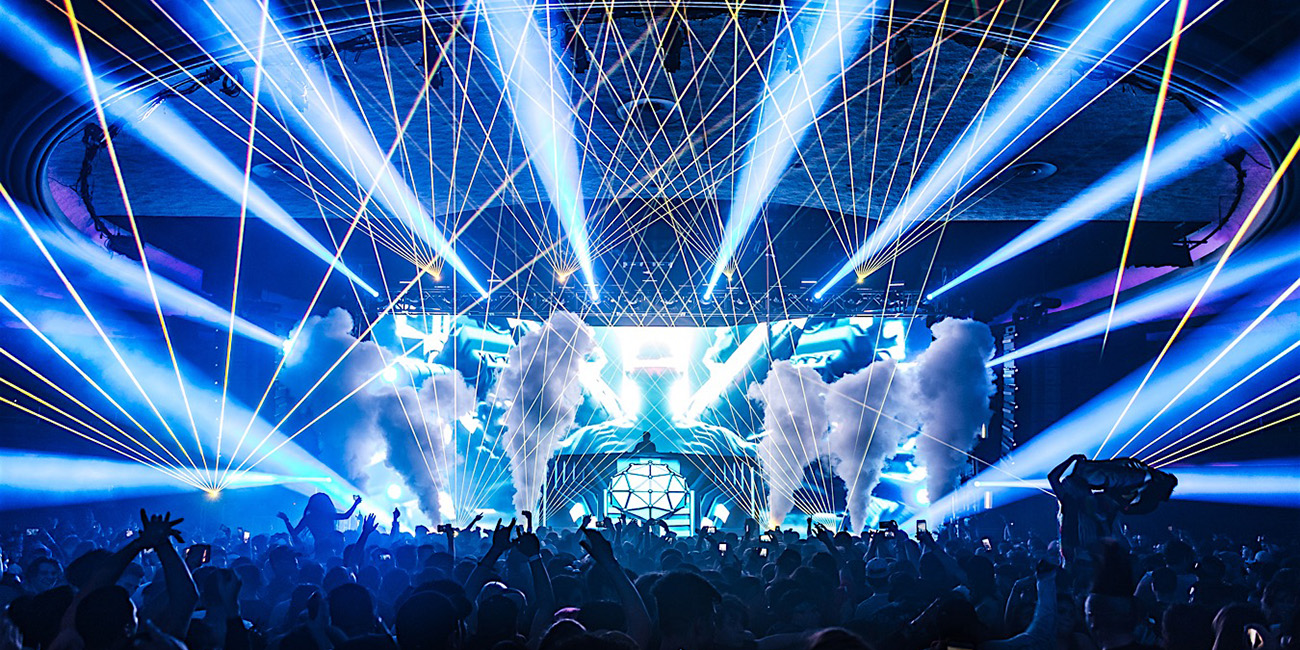
Upcoming Event
Dubstep monster Excision is known for two things: dank and dirty bass, and face-melting stages and productions. As one of the leading independent artists on the scene, the Canadian DJ/producer has built a loyal worldwide following on the strength of his bone-crushing brand of dubstep. Over the years, he’s played an integral role in the ongoing evolution of stage productions and designs in electronic music through his insane and progressive-thinking creations, which include the revolutionary X Vision show, as part of the X Tour in 2012, and the cutting-edge Executioner. Excision then upped the ante with the debut of the Paradox, a behemoth audiovisual experience taking stage production to the next level.
Officially premiered in late 2015, the Paradox represents Excision’s third custom stage installation to date. It’s his boldest, most ambitious production undertaking, too, boasting 150,000 watts of ear-rattling PK Sound, a fully custom stage rig, and a modular, LED-based setup for some truly sick visuals and out-of-this-world animations. This month, Excision is launching his 2018 Excision Tour, where he’s taking the Paradox across the US for another round of bass in your face.
Excision kicks it all off this weekend with a double-header show in SoCal Friday, January 19, and Saturday, January 20, at NOS Events Center in San Bernardino, CA. That’s followed by another weekender in NorCal Friday, January 26, and Saturday, January 27, at Bill Graham Civic Auditorium in San Francisco, CA. Prior to all the madness, we chatted with Excision himself about all things Paradox and the future of visuals and production within the electronic world.
For years, you’ve been associated with technologically forward-thinking shows and productions—from the Executioner to your live act Destroid, and now with the Paradox. From where does your fascination with technology stem? Have you always been into technology and gear, in a musical sense?
Music is obviously a huge part of it, but my interests have always spanned the breadth of any form of media/art where you can create a world, environment or feeling. There is no shortage of sci-fi/superhero/future tech in modern-day media, so it’s not even so much about looking for inspiration anymore, as it is choosing between a multitude of awesome ideas. I’ve always had a hard time being satisfied with “good enough,” and with how far ahead we are always booking shows and working on releases that won’t be heard until months or a year later, it’s easy to forget the past and stay focused on the future. From there it’s always, “Do I really have enough time in my life to do this?” The Executioner, Destroid, the Paradox, and Lost Lands were all media/music/art endeavors I really enjoyed, and I’m already waiting for an opportunity to take things even further!
Prior to the Paradox, you had the Executioner. Is there a lot of production or idea crossover between the two stages, or are they two completely separate beasts?
The two stages are completely different, but the Paradox wouldn’t exist in the form it does if the Executioner hadn’t come before it. We learned a lot from touring with the Executioner in different venues, and some of the big decisions we made for the Paradox were based around wanting to enhance the show experience for everyone in the venue. For instance, one of the core reasons the Paradox is mostly a concave shape, as opposed to the convex design of the Executioner, is because a concave surface looks great at almost any viewing angle. There is almost no bad seat in the house, as far as a viewing point, when it comes to the Paradox. The other major thing we learned from the Executioner is that it can’t fit in the small venues, and it looks tiny in big venues. With the Paradox, we have 16 possible configurations to be able to use the largest possible size that will fit in the venue.
In addition to a massive sound system, the Paradox is known for its insane visuals—you’re now using a modular, LED-based setup, as opposed to video projection mapping. How does this approach change the visual portion of the show?
I think the biggest change that most people don’t realize is even happening is that it affects how immersive the show is. Projection mapping is awesome and has its place, but it doesn’t offer the same flexibility our high-definition LED panels offer when it comes to adapting to different stages and venues. The other major difference is that projection mapping seriously limits what you can do with lighting, as more than a few lights will completely wash out your projection surface. Now that we are mostly in large theaters and arenas, we need to have a ton of lights to fill up the huge volume in the room and bring everyone into the environment. We don’t want you to just watch the show; we want everyone to be part of it. That’s why we spend so much time perfecting the stage and sound systems.
From a design perspective, the Paradox gives us a lot more freedom to think of new ideas and allows us to do a lot of cool things with the animations that were never possible on the old stage. We’ve gone another step further this year by spending extra time with all of our animators to create new styles of visuals and over 50 new animations just for 2018.
Word on the street is that you’re also controlling the visuals, VJing, and DJing the Paradox shows at the same time. With such an elaborate visual show happening simultaneously with your wild DJ sets, how is that even humanly possible?
Yeah, that’s correct. The DJ equipment that I play on in the Paradox is an evolution of the same system we designed for the Executioner. It’s had a ton of improvements over the years, but at its core is a system based around MP4 music video files, rather than audio-only MP3s. This allows me to control both what you hear and what you see simultaneously, while keeping everything in perfect sync.
The animations that make up the video portion are all 100 percent custom designed for each song and built specifically for the purpose of being used on the Paradox. We have a team of a dozen animators from around the world who spend the bulk of the year helping us create all of the content. Onstage, I’ve got a video monitor with three outputs; as I play a song, I can see the video that goes with it and use the crossfader to mix between the video independently while the upfaders mix the audio. It takes a minute to wrap your head around, especially when you’re playing a song a minute, but once you’re in the groove, it’s a really fun way to perform and control an entire sensory experience.
How do you tour such a behemoth production around the country? How long does it take to build and break down each night?
It’s definitely a process, and something I couldn’t do without the support of my amazing tour crew. It takes three full semi trucks to transport all of the parts that make up the Paradox each day. Each of those parts has to be unpacked, assembled, taken down, and then repacked into the truck for every single show. Factoring in that we play back-to-back nights in different cities and states each night, the entire process has to run perfectly to ensure the show goes off each night without issues.
Starting with the end of one show, which may end as late as 2am, we start the teardown process, which is the fastest part in the cycle and generally takes around three to six hours. Once the team is done playing Tetris with road cases and equipment inside the semi trucks, we hit the road to the next venue. The crew typically gets about five to seven hours to try and sleep before we pull up to the next venue, get some coffee in everyone, and then start the load-in and building process. It usually takes about two hours, and the help of local stagehands, just to get everything unpacked, and then another four to six hours to build the stage, depending on the venue and any issues we may come across.
Another cool fact about the Paradox is that it’s a modular design, meaning we can shrink or grow the stage, depending on the venue we are playing. The Paradox might have to shrink down for a smaller venue on a Thursday and then be rebuilt twice as large in an arena 24 hours later. This also means every build day is a new experience. I’m super thankful for everyone on my team for doing such a killer job, both physically and mentally, each show to adapt the stage perfectly for any venue.
“We are in the middle of such a rapid advancement in our capability to use technology to enhance live experiences, and it’s exciting [to try] to be on the forefront of it all. At this point, if we run into something that isn’t technically possible yet, I have complete faith that it will be possible in just a matter of time.”
It sounds like you’ve implemented changes and improvements into the show throughout the years based on things you want the production to actually do. Have there ever been any instances where you wanted something to happen in the show that could not be completed for financial/creative/technical reasons?
With any creative endeavor that involves technology, you will always run into some limitations. But we’ve been fortunate that a lot of the things we couldn’t do at a certain point in time, we have ended up being able to figure out within a few years. We are in the middle of such a rapid advancement in our capability to use technology to enhance live experiences, and it’s exciting [to try] to be on the forefront of it all. At this point, if we run into something that isn’t technically possible yet, I have complete faith that it will be possible in just a matter of time. The very first design of the Paradox, which we never got to build, is still something I’d love to create one day, and I still have so many other crazy things I’d like to try with our production in the future. We’re just waiting for the technology to catch up!
How much of the creative input is controlled by you and your team, compared to the technical and engineering teams actually building your productions?
I’ll be the first to admit that I can be a bit of a control freak when it comes to the smaller details of what we do, and I intentionally try to encourage my core team to operate the same way. Nothing you see or hear onstage occurs without first going through a heavy creative process through me. I don’t do this because I don’t trust other people to do the work, or anything like that. It’s just that I take a lot of responsibility in providing fans with an experience that is genuinely from me. The team we’ve built over the years of touring has tons of ideas, too, and they love working in an environment where they can come up with a crazy idea and see it come to life in a short period of time.

In particular, the electronic music scene has really embraced and evolved the potential of visuals and lighting from a production standpoint. What is it about electronic music that allows for such major developments?
I think the experience of the stage, lighting, and sound has evolved with dance music itself over time, but the idea of adding a visual and immersive element to the shows has always been there. Even in the early days of warehouse parties, they were often promoted based off a fun theme or pushed based around how the production at the show will be top-notch. As the shows moved from warehouses into legit venues, and more money came into things, this allowed promoters to bring their experiences to the next level. Nowadays, the experience is being pushed by artists themselves and the larger festivals within our scene. The music will always be the heart and soul of the live experience, but with electronic music, you get an amazing scene of fans who are open to trying new things and in an environment where anything is possible!
Where do you see the future of visuals and production for music going, particularly within the electronic music and festival space?
Bigger and better—we’re just getting started.
Catch Excision at the 2018 Excision Tour ft. the Paradox Friday, January 19, and Saturday, January 20, at NOS Events Center in San Bernardino, CA, and Friday, January 26, and Saturday, January 27, at Bill Graham Civic Auditorium in San Francisco, CA. Tickets are for the SoCal and San Francisco shows available now. For more information, visit the official website.
Follow Excision on Facebook | Twitter | SoundCloud

